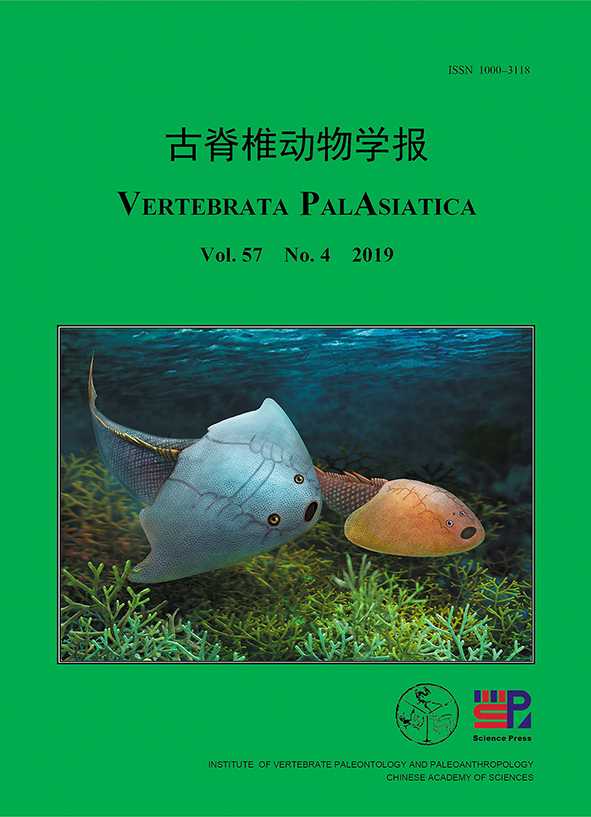
封面说明:新疆塔里木盆地志留系“下红层”西域鱼(Xiyuaspis) (右)和小瘤鱼(Microphymaspis) (左)的生态复原图。张氏西域鱼(X. zhangi)和潘氏小瘤鱼(M. pani)发现于新疆塔里木盆地志留系“下红层”,代表了目前无颌类盔甲鱼类出现的最低层位。经过新的研究,曾经被归到汉阳鱼科的张氏南疆鱼(Nanjiangaspis zhangi)被厘定为修水鱼科(Xiushuiaspidae)一新属西域鱼;而曾被归于修水鱼科(Xiushuiaspidae)的潘氏小瘤鱼,与产自同一产地和层位的天山宽头鱼(Platycaraspis tianshanensis)系同物异名,根据命名法规的优先法则,潘氏小瘤鱼予以保留,其系统位置被厘定为大庸鱼科(Dayongaspidae)。这两种盔甲鱼被认为是生活在近岸滨海环境的底栖鱼类,其栖息地主要包括古陆边缘的三角洲和江河入海口等地。详见刘玉海等人文(p. 253) 。(绘图:赵日东、杨定华)
Cover image: Ecological reconstruction of Xiyuaspis (right) and Microphymaspis (left) from the ‘lower red beds’ of the Silurian of the Tarim Basin, Xinjiang. Xiyuaspis zhangi and Microphymaspis pani from the ‘lower red beds’ of the Silurian of the Tarim Basin, Xinjiang are representing the lowest bed of galeaspid occurrence. The new research indicates that the Nanjiangaspis zhangi is referred to a new genus of the Xiushuiaspidae, Xiyuaspis gen. nov.; Platycaraspis tianshanensis is the junior synonym of M. pani. According to the principle of priority, M. pani is retained, but it is removed from the Xiushuiaspidae, and referred to the Dayongaspidae. Both fishes are assumed to be coastal bottom-dwellers living in the habitats close to palaeocontinental margin, including delta and estuary. See details in the paper of Liu et al. (p. 253). (Illustrated by Zhao Ridong and Yang Dinghua)